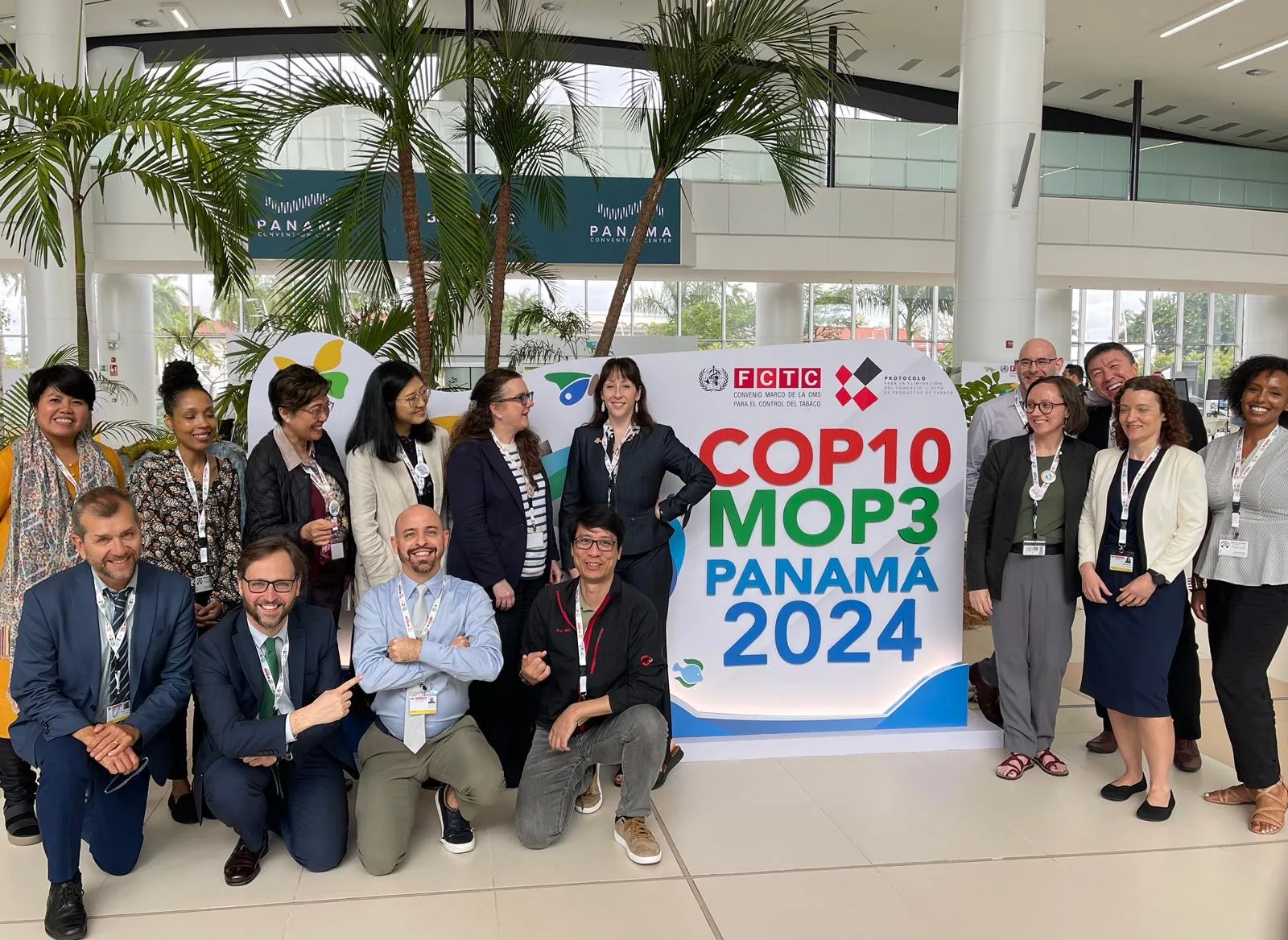- Resources
- News
-
-
Get Email Updates
Sign up for STOP's emails and never miss an update on our latest work and the tobacco industry's activity.
-
Get Funding
Ready to tackle industry interference? You could be eligible for a grant.
-
Share a Tip
Do you have information on tobacco industry misconduct in your country? Let us know.
-
Get Email Updates

Big Tobacco’s attempts to use digital media to hook young people on its addictive products may be hitting a roadblock.
In February 2024, delegates to the WHO Framework Convention on Tobacco Control (WHO FCTC) gathered at the tenth Conference of the Parties (COP10). Amidst discussions about how to best implement the global treaty to reduce tobacco use, the Parties agreed to adopt a proposed set of specific guidelines aimed at curbing tobacco promotion online and in entertainment media. These complement existing guidelines in Article 13 of the FCTC, which addresses tobacco advertising, promotion and sponsorship (TAPS).
With millions of young people being subjected to tobacco and nicotine ads through streaming content such as Netflix’s “Formula 1: Drive to Survive,” and with approximately 16 million people under the age of 18 being exposed to industry advertising online, according to a recent Campaign for Tobacco-Free Kids report, this decision couldn’t come soon enough.
As Parties to the FCTC begin to implement the additional Article 13 Guidelines, countless young people around the world will gain protection from the industry’s insidious attempts to infiltrate the places they go for news, entertainment and social interaction.

The guidelines address the problem of cross-border [promotion] in the digital environment, or advertising that originates in one jurisdiction and is shared and seen in another.
How did we get here?
The tobacco industry’s future depends on hooking new users on its addictive products. A key target for this is—and always has been—young people. That’s why tobacco companies have historically gone where young people go, promoting and displaying their harmful products at music festivals, arts institutions and even around playgrounds and schools. Article 13 Guidelines, which were adopted in 2008, provide assistance for Parties in effectively regulating TAPS. Where advertising bans have been implemented according to these Guidelines, they’ve helped to curb TAPS, but a lot has changed since 2008.
New tobacco industry products have entered the market and there are new digital ad platforms, many of which remain largely unregulated. And the tobacco and nicotine industries are taking full advantage. At COP8 in 2018, a working group was created to address these new challenges. This working group drafted a set of specific guidelines, which were discussed and adopted at COP10.
What do the new guidelines call for?
It’s important to note that the new specific guidelines don’t replace the existing guidelines. Instead, they act as a helpful supplement, acknowledging that the advertising landscape has changed a lot, and quickly.
The new guidelines note that TAPS have moved beyond traditional media that is often subject to regulation, like TV, radio, print and outdoor media; that new digital platforms exist; and that a whole new category of tobacco and nicotine products, such as e-cigarettes and heated tobacco products, are now being marketed.
The new guidelines advise, among other things, that TAPS regulations should apply to all digital media platforms, including “internet-accessible online spaces where users can post, purchase, view, share, create, upload, stream or engage with content that includes any form of electronic media such as digital video, audio, pictures, social media, apps, games, web pages and interactive media.”
The guidelines address the unique problem of cross-border TAPS in the digital environment, or advertising that originates in one jurisdiction and is shared and seen in another, including in places where such ads and/or the tobacco products themselves may be illegal. Digital TAPS can be easily created, shared, manipulated and deleted from anywhere, posing new monitoring challenges not typically encountered in traditional media.
In light of that, the specific guidelines call on Parties to stay the course, fully implementing Article 13, and to stay nimble, taking an adaptive approach to countering industry tactics.
The guidelines ask Parties to ensure that implementation and enforcement of Article 13 Guidelines keep up with new media landscapes and the industry’s ever-changing marketing methods.
They also call on Parties to work together. The guidelines emphasize the importance of Parties exchanging information and helping each other with cross-border enforcement on digital channels. They encourage Parties to monitor more and monitor together—capturing and sharing country- and region-specific data that will make it easier to identify the nature of the problem and counter it effectively. They ask Parties to collaborate on the development of technology to help eliminate cross-border advertising and to develop mechanisms for regular notifications between the Parties.

Like other provisions in this landmark treaty, these guidelines can truly make a difference in preventing children and young people from becoming hooked on the industry’s products.
What’s next?
The decision to adopt these specific guidelines was a critical step forward in much-needed regulation of digital spaces to protect children and young people.
Implementation will be the next big step, but that is only part of the equation. Parties must also enforce the new rules, working together to maximize their efficacy. And, perhaps most importantly, Parties must keep the industry out of policy discussions and decisions.
The industry has consistently acted in its own commercial interests, even as its products kill more than 8 million people every year. Fully implementing Article 5.3—another very important part of the FCTC—will help governments protect their heath policies such as TAPS bans from industry influence.
The sooner governments act, the sooner people will reap the benefits. Like other provisions in this landmark treaty, these guidelines can truly make a difference in preventing children and young people from becoming hooked on the industry’s products, and will play an important role in reducing the devastating health, economic and environmental consequences of tobacco use.



